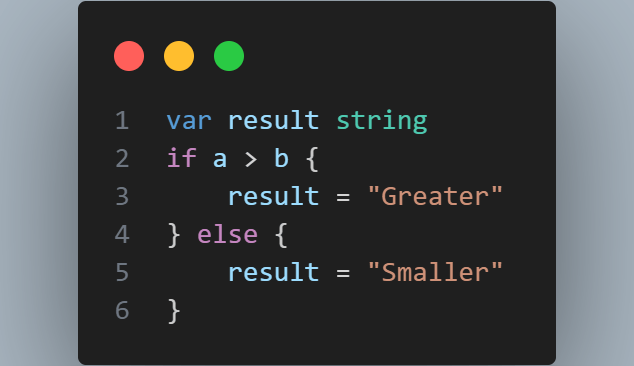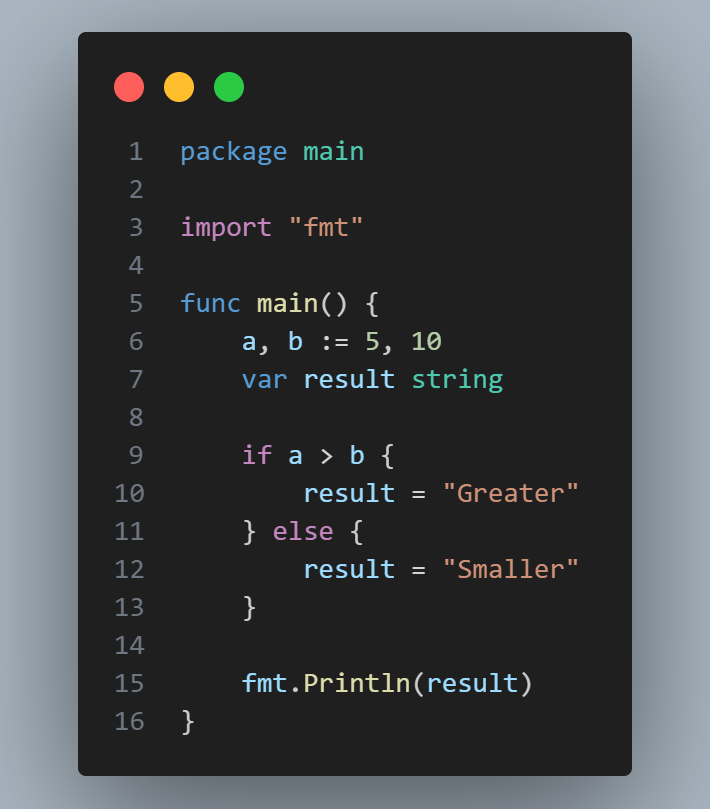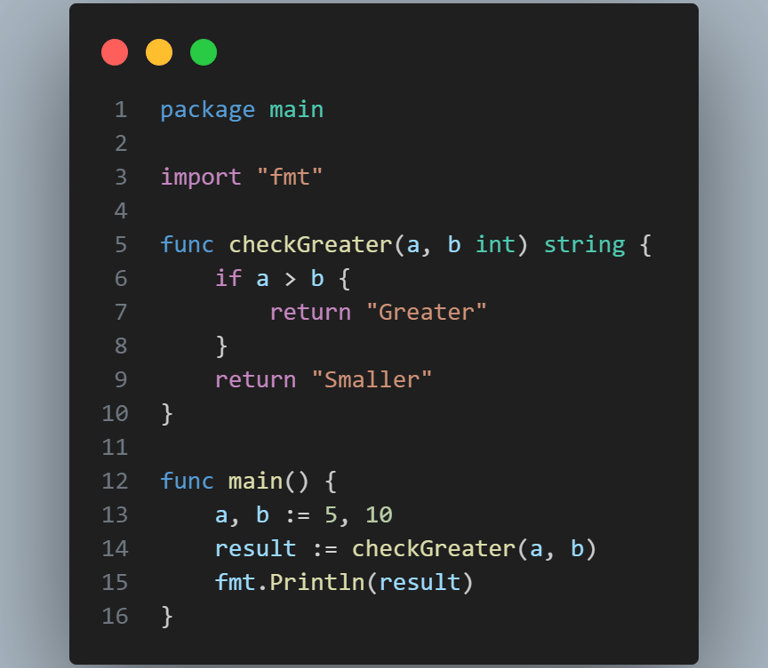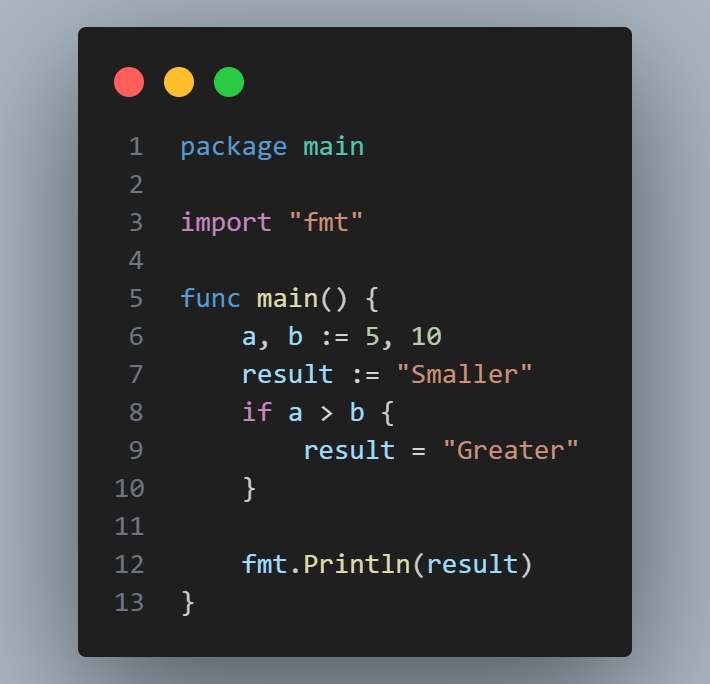The Golang Ternary Operator: Everything You Need to Know
How to Use the Golang Ternary Operator for Cleaner Code
TECHNOLOGYSOFTWARE DEVELOPMENTGOLANG
frostByte
8/8/20255 min read


Understanding the Golang Ternary Operator
In the world of programming, operators play a pivotal role in controlling the flow of code. While languages like C, Java, and Python offer the ternary operator as a shorthand for if-else statements, Golang (Go) famously does not include a native ternary operator. The lack of a ternary operator in Golang has been a topic of discussion within the Go community for years.
But what does this mean for developers who come from languages where ternary operators are commonly used? In this article, we will explore:
Why Go doesn't have a ternary operator.
Alternative approaches to handle conditional expressions in Go.
Advanced examples of how you can simulate the behavior of a ternary operator in Go.
Recent discussions and considerations from the Go community regarding this limitation and its implications on clean code and developer efficiency.
By the end of this article, you'll have a comprehensive understanding of the Golang ternary operator issue and how to effectively handle conditional expressions in Go.
1. What is the Ternary Operator?
Before we dive into the intricacies of Go's approach, let's first define the ternary operator. In languages like Java, C, and JavaScript, the ternary operator is a compact form of the if-else statement, often written in this format:


Here, if the condition (a > b) is true, the variable result is assigned "Greater", otherwise, it’s assigned "Smaller". This form is compact and can reduce the verbosity of conditional checks in many cases.
2. Why Golang Doesn’t Have a Ternary Operator
Go, unlike many other languages, does not support the ternary operator. This decision, made by Go’s creators, has sparked plenty of discussion within the community. The reasoning behind this is rooted in Go's design philosophy, which emphasizes simplicity, clarity, and explicitness.
2.1 Simplicity Over Conciseness
The Go creators, particularly Rob Pike, have emphasized that simplicity and readability were the main goals when designing Go. Including a ternary operator might introduce a compact way to express conditionals, but it could also introduce confusion, especially for new developers or those coming from languages without the ternary operator.
The ternary operator often leads to overuse in some languages, making the code harder to read, especially for more complex conditional expressions. Go’s if-else syntax is more explicit, requiring the developer to be clear about the conditions and outcomes.
2.2 Clarity and Readability
With Go, readability and clarity take precedence. The decision to omit the ternary operator is seen as a way to prevent developers from writing overly compact expressions that might obscure logic. Go’s if-else syntax is seen as a clearer, more explicit alternative.
Here’s a simple comparison:
With Ternary Operator:


With if-else in Go:


While Go’s if-else is slightly longer, it makes the condition and outcome explicit, improving readability for all levels of developers.
3. Alternative to Ternary in Golang: if-else Expressions
Since Golang does not support the ternary operator, senior developers often rely on traditional if-else statements for conditional expressions. However, there are various ways to optimize and clean up these conditions to achieve a more tertiary-like effect.
3.1 Basic if-else Example
Let’s start with a simple if-else statement, which is the direct alternative to the ternary operator.


Explanation:
The code checks if a is greater than b and assigns "Greater" or "Smaller" to result accordingly.
This pattern can become more verbose in cases with multiple conditions, but it remains explicit and easy to understand.
3.2 Simulating Ternary Behavior in Go Using a Return Statement
In some cases, you may want to simulate the ternary operator behavior in a function or method. One common way to do this is by using a return statement with an if-else block.


Explanation:
This function returns "Greater" if a is greater than b and "Smaller" otherwise.
The return statement ensures that the logic remains clean and readable, mimicking the ternary operation style.
3.3 Using Inline Conditional Assignments (Shortened Syntax)
In Go, you can also reduce verbosity with inline assignments:


Explanation:
This pattern is similar to a ternary operator in the sense that the condition is evaluated first and the result is assigned accordingly. It's just slightly more explicit compared to the ternary operator but still efficient.
4. Recent Discussions About Ternary Operator in the Go Community
Recently, a discussion on Reddit sparked a renewed conversation about Go's lack of a ternary operator. Developers, especially those new to Go, found themselves frustrated by the verbosity of if-else statements when compared to the elegance of ternary operators in other languages.
One Go contributor argued:
“While Go’s decision to omit the ternary operator was driven by a focus on clarity and simplicity, I’ve found myself writing longer if-else blocks that are harder to maintain. Some clarity comes with verbosity, but this feels a bit excessive at times.”
On the other hand, senior Go developers emphasized that Go’s explicit style encourages better understanding and maintainability in large codebases, especially as teams scale.
“The decision to skip the ternary operator was intentional. It forces developers to write clear and understandable code, which pays off in the long term. Plus, using if-else is just as fast and flexible, and it avoids the unnecessary complexity that sometimes arises with ternary operators.”
Conclusion: Embracing Go’s Explicitness Over Ternary Operator
The Golang ternary operator has been a point of contention for developers coming from languages where it is a standard feature. However, Go’s design philosophy values simplicity, clarity, and explicitness over brevity. Here’s a recap of how senior developers handle conditional expressions in Go:
Use if-else for clarity and to make logic explicit.
For cleaner, more compact expressions, consider using inline conditional assignments or returning values from functions.
Avoid trying to mimic ternary-like syntax too closely, as Go’s design encourages simplicity and readability, which reduces the chance of introducing hidden complexity.
By adhering to Go’s explicit style, developers can produce code that is both maintainable and scalable, particularly in large systems or teams.
While the Golang ternary operator might not be a built-in feature, Go's approach ensures that logic remains clear, easily understandable, and performant—qualities that senior developers value when building large-scale, long-term applications.